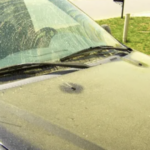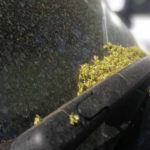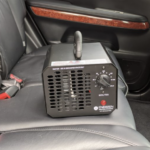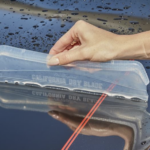The Best Way to Clean and Protect Your Car’s Wheels and Tires
Why Cleaning Your Wheels and Tires is Important
Wheels and tires take the most abuse on a vehicle. They come into constant contact with brake dust, road salt, tar, and dirt, all of which can corrode surfaces over time. Without proper cleaning and protection, wheels lose their shine, and tires dry out, leading to cracking or fading.
Regular maintenance not only improves appearance but also extends the lifespan of both wheels and tires. Keeping them in top condition prevents corrosion, brake dust buildup, and premature wear.
How Often Should You Clean Your Wheels and Tires?
The frequency of cleaning depends on driving conditions and weather exposure.
- Weekly Cleaning: Recommended for daily drivers, especially those in high-traffic areas where brake dust accumulates quickly.
- Biweekly Cleaning: Suitable for cars that are driven occasionally or in mild conditions.
- Monthly Deep Cleaning & Protection: Essential for maintaining wheel coatings and keeping tires from drying out.
If wheels are exposed to coastal air, salted roads, or excessive dust, more frequent cleaning prevents long-term damage.
Tools and Products You’ll Need
Having the right tools ensures a scratch-free, deep clean without damaging the finish.
- pH-balanced wheel cleaner – Safe for all finishes, including painted, chrome, and alloy wheels.
- Tire cleaner or degreaser – Removes embedded dirt and old tire dressing.
- Wheel brushes – Soft-bristle brushes for spokes and a barrel brush for deep cleaning inside the wheel.
- Tire brush – A stiff-bristle brush to scrub rubber surfaces.
- Microfiber towels – Used for drying and applying protectants.
- Iron remover – Helps break down stubborn brake dust and iron deposits.
- Wheel sealant or ceramic coating – Adds protection against dirt and brake dust.
- Tire dressing – Conditions and protects rubber from cracking.
Avoid using acid-based wheel cleaners, as they can damage delicate finishes, especially on polished or anodized wheels.
Step-by-Step Guide to Cleaning Wheels and Tires
1. Rinse Off Loose Dirt and Brake Dust
Start by rinsing the wheels and tires with a strong stream of water to remove loose dirt and debris. This prevents scrubbing contaminants into the surface, which could cause scratches.
If using a pressure washer, keep it at a safe distance to avoid damaging the wheel’s finish.
2. Apply Wheel Cleaner and Let It Dwell
Spray a pH-balanced wheel cleaner liberally over the entire wheel, focusing on areas with heavy brake dust buildup. Let it sit for 2-4 minutes to break down grime.
For wheels with excessive iron deposits, use an iron remover. The cleaner will turn purple as it dissolves embedded particles.
3. Scrub with a Wheel Brush
Use a soft-bristle wheel brush to clean spokes, lug nut holes, and other tight areas. A barrel brush works well for cleaning inside the wheel barrel, where dirt accumulates over time.
For chrome or polished wheels, use a dedicated wheel soap and soft microfiber mitt to avoid scratching the finish.
4. Clean the Tires with a Stiff Brush
Spray tire cleaner or degreaser directly onto the sidewalls. Let it sit for a minute before scrubbing with a stiff-bristle tire brush. This removes:
- Dirt and road grime embedded in the rubber.
- Old tire dressing that causes browning.
- Oil residue that leads to premature drying and cracking.
Tires should look clean and free of any oily residue before applying a protectant.
5. Rinse Thoroughly and Dry
Rinse the wheels and tires completely, ensuring no cleaner remains on the surface. Leftover residue can cause streaking or damage protective coatings.
Use a microfiber towel or air blower to dry completely before applying protectants.
How to Protect Wheels and Tires After Cleaning
Apply a Wheel Sealant or Ceramic Coating
To keep wheels cleaner for longer, apply a wheel sealant or ceramic coating. These coatings provide:
- Hydrophobic properties that repel dirt and brake dust.
- UV protection to prevent fading.
- Easier cleaning since contaminants won’t bond as easily.
Most ceramic wheel coatings last for months, reducing the need for frequent scrubbing.
Use a High-Quality Tire Dressing
Tire dressing enhances the look of rubber while protecting it from drying out. There are two main types:
- Water-based tire dressings – Offer a natural, satin finish and won’t attract dust.
- Silicone-based dressings – Provide a glossy shine but may sling onto the paint.
For the best results, apply a thin, even layer with a foam applicator and let it dry for at least 15 minutes before driving.
Common Mistakes to Avoid
Using Household Cleaners on Wheels
Dish soap, degreasers, or acid-based cleaners strip protective coatings and damage delicate finishes. Always use a wheel-specific cleaner.
Skipping the Tires During Cleaning
Tires hold onto oils, dirt, and old dressing, which can cause them to dry out. Regular scrubbing keeps rubber conditioned and prevents browning.
Applying Too Much Tire Dressing
Excess tire dressing can sling onto the paint, causing streaks. A thin layer is all that’s needed for a clean, finished look.
Neglecting the Inner Wheel Barrels
Brake dust accumulates on the inner barrels, leading to pitting and corrosion. Using a barrel brush extends the lifespanof wheels and maintains a uniform shine.
Long-Term Maintenance Tips for Wheels and Tires
- Rinse wheels weekly to prevent heavy brake dust buildup.
- Use a spray wax or sealant after washing for added protection.
- Rotate tires every 5,000-7,500 miles to ensure even wear.
- Check tire pressure regularly to improve handling and fuel efficiency.
For areas with coastal exposure or high humidity, applying extra protection helps combat corrosion and rubber deterioration.
Final Thoughts
Proper wheel and tire maintenance keeps your vehicle looking sharp while extending the lifespan of key components. Regular cleaning prevents brake dust buildup, corrosion, and premature aging, ensuring a showroom-quality finish.
Whether using DIY methods or professional Orlando mobile detailing, taking the time to care for wheels and tires improves performance, aesthetics, and safety.
Leave a Comment Cancel Comment
Book Orlando Mobile Detailing
Search
Latest Post
-
 The Cost of Neglect: Why Regular Aircraft Detailing Saves Money in the Long Run
February 14, 2025
The Cost of Neglect: Why Regular Aircraft Detailing Saves Money in the Long Run
February 14, 2025
-
 Why Car Washes Aren’t Enough to Combat Pollen Damage
February 13, 2025
Why Car Washes Aren’t Enough to Combat Pollen Damage
February 13, 2025
-
 Orlando’s Pollen Problem: When Is It the Worst and How It Affects Your Car
February 13, 2025
Orlando’s Pollen Problem: When Is It the Worst and How It Affects Your Car
February 13, 2025
-
 How Ozone Generators Eliminate Stubborn Car Odors in Orlando
February 12, 2025
How Ozone Generators Eliminate Stubborn Car Odors in Orlando
February 12, 2025
-
 Why a Water Blade and Chamois Beat Towels Every Time!
February 9, 2025
Why a Water Blade and Chamois Beat Towels Every Time!
February 9, 2025
